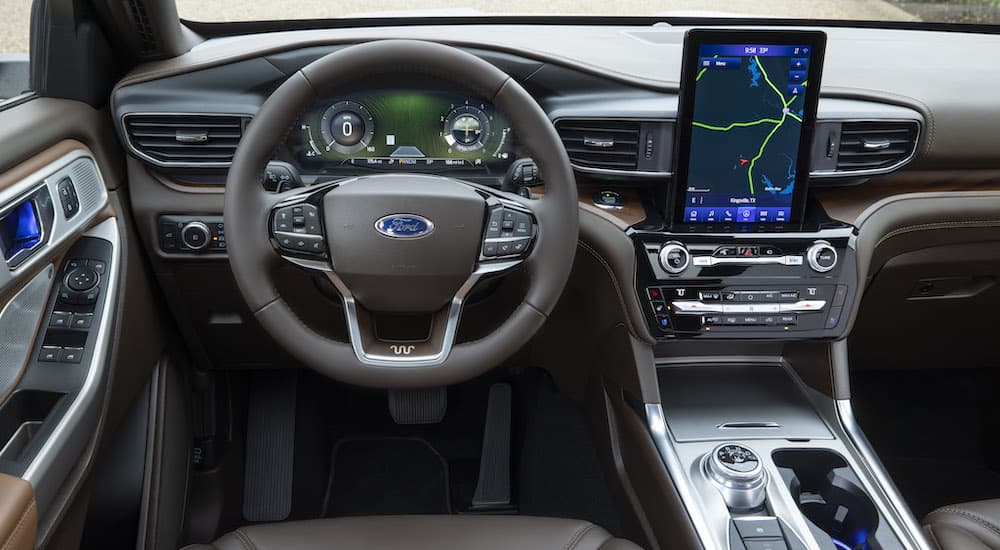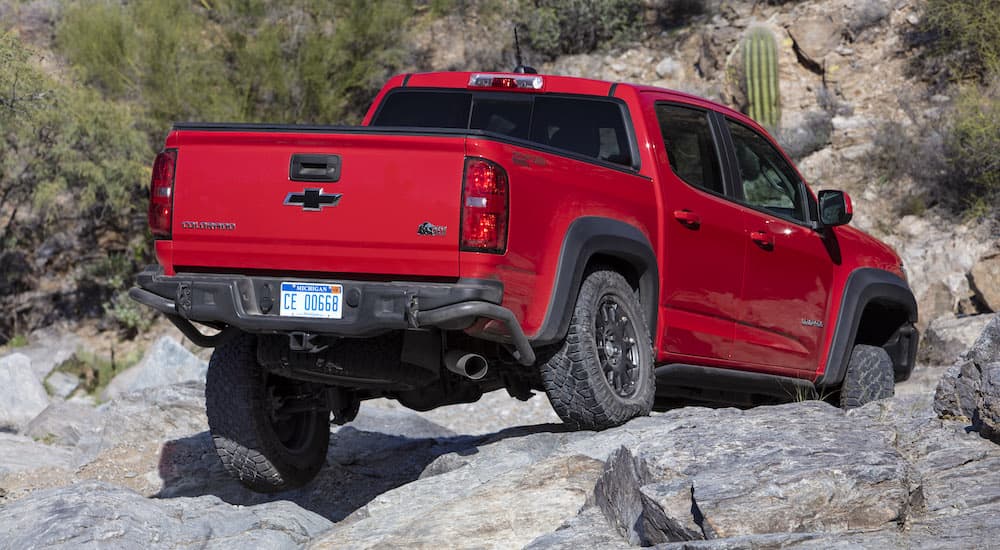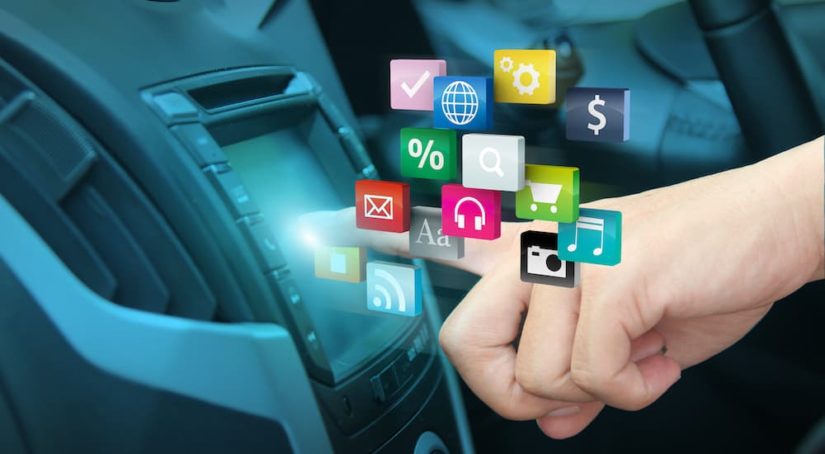When you’re shopping for a car, it’s easy to get so focused on all of the big picture stuff – make, model, size, etc. – that you completely overlook some of the small things. The problem there, however, is that it’s often the small things that make the biggest difference to your enjoyment of your vehicle many years later. Of course, you want a truck that can handle your towing needs or an SUV with plenty of seats for your family, but once you’ve got that figured out, the tech features are what you should focus on. These are the things you’re going to actually interact with and use every day, and the differences between them can be huge.
Although I can’t magically tell you everything that you personally need in your next vehicle, I can point you in the right direction. A lot of this will depend on your budget, as you’ll probably need to prioritize certain things over other options. The model you choose will also make a big difference: a luxury vehicle will have some features as standard that require extra packages on other models or which simply aren’t available on some other cars. With prioritization in mind, let’s look at which features you should definitely focus on, which are nice luxuries, and which you should do your best to avoid.
Technology That’s Worth It
As far as I’m concerned, when you’re shopping for your next car, the most important technology to look at is the safety features that it comes with. Safety technology has advanced by leaps and bounds over the last decade and what you can find in cars today far surpasses seatbelts and airbags. Unfortunately, a lot of this stuff isn’t standard across the industry or required by the federal government, so you’re going to see a lot of differences when checking out one model vs. another. Even when you’re looking at different vehicles from the same manufacturer, some of them might have features as standard that you have to pay for on another one.
The one piece of advanced safety technology that has become standard in the last few years, due to federal requirements, is a rear backup camera. Every new vehicle made today, and sold in the US, has to have one of these cameras and a screen for you to see it on, which is why you’ll find some sort of infotainment display in every car out there – though some are pretty small. My hope is that more tech like this will be required in the future, but until that happens, you’ll need to look for it specifically.
A lot of this is generally referred to as “driver assistance technology,” and it includes things like automatic braking, side blind zone alerts, and warnings for traffic that’s crossing behind your vehicle when you’re in reverse. There are also tech features like lane-keeping systems that will automatically center your vehicle if it’s drifting toward the edge of your lane, rather than when you are turning the wheel to change lanes. Most of these systems will use audible alerts or warning lights to let you know when they activate and warn you when there’s a possible danger. Some systems even include seat feedback that vibrates or pulses in your seat to warn you about something, but this is usually a luxury feature or part of an optional package.
The one major note I want to add here is that a lot of brands have their own specific or unique names for some of these features, along with the packages they’re a part of. For example, Chevy has a “Forward Collision Alert and Automatic Emergency Braking,” “Lane Keep Assist with a Lane Departure Warning,” and a “Lane Change Alert with Side Blind Zone Alert.” If you look at Ford, then you find “Pre-Collision Assist with AEB” (Automatic Emergency Braking), a “Lane-Keeping System,” and a “Blind Spot Information System (BLIS) with Cross-Traffic Alert.” You can see that the names are pretty similar and generally tell you what they do, but remember that the same safety tech might have different names from different manufacturers.

Tech That’s a Nice Extra
Most of the technology that you’ll find in the cabin of a vehicle are things that are a great extra and worth the price if your budget affords it, but not absolutely essential (there are some exceptions to this we’ll get into below). Arguably, the most worthwhile tech features as a nice extra are those that involve making your seat as comfortable as possible. This includes heating and ventilation (so you can stay warm or cool depending on the weather), as well as power-adjustable seating that’s easy to position just how you want. A memory setting for the driver’s seat is also well worth it if you’re going to have more than one person frequently driving since this can automatically adjust to the right settings for you.
Support for major audio streaming services is worth it, primarily Apple CarPlay and Android Auto, but this is standard in just about every new vehicle these days. Wireless support is also becoming more common and can make streaming audio even easier. Some luxury models have massage features in the seat, which can be very nice, though this is definitely a very “extra” extra. Interior LED lighting can make being inside your vehicle a lot nicer, and speaker options beyond the standard ones make a huge difference if you’re a serious music lover.
Finally, consider any technology that will help you with the road conditions you typically have to deal with. If all you do is city driving, then you probably don’t need four-wheel drive or all-wheel drive; but if you find yourself on a lot of dirt roads or do a ton of hiking/camping, then this can be essential. Some very advanced safety features, like automatic or assisted parking technology, can also be a great extra that makes life a lot easier.

Technology to Avoid
There’s not a ton of technology available on cars that you absolutely want to avoid, but some things do stick out. Perhaps the single biggest thing to avoid is touch controls on infotainment setups that use the touchscreen for audio and climate controls. You really can’t safely adjust these things while keeping your eyes on the road since there’s no physical knob to grab, so needing to look at a screen to make these changes can be very dangerous. Touchscreens also fail faster and more easily than a physical knob, so just avoid it (fortunately, a lot of manufacturers have gotten this memo, and they’re going back to physical controls for these systems).
Extra features like biometric controls, which use your fingerprint or similar part of your body for input, and concierge services or infotainment systems with in-app purchases are all generally worth skipping.
Unfortunately, you probably won’t be able to completely avoid having shopping apps in the infotainment system since that’s usually up to the manufacturer. But most people with these features don’t ever use them, so they’re not worth going out of your way for, no matter how much the manufacturer tries to make them sound like an exclusive extra.
It’s also worth keeping in mind what features you could easily add to your vehicle as an aftermarket option, potentially at a lower price. I know I just mentioned that available speaker setups can be a great option, but they’re also something that you can easily add after the fact. It can be a lot more costly and difficult to add extra safety features once you already have your vehicle, compared to something like more/better speakers. So if you need to choose between these sorts of tech options, go for the ones that are best obtained when the vehicle is new over something you can pretty easily add aftermarket.



